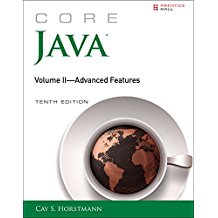Core Java: A Comprehensive Guide to Building Robust Applications
Introduction
Core Java, the fundamental programming language, provides the building blocks for a wide range of applications. It's essential for developers to have a strong grasp of its core concepts to create efficient, scalable, and maintainable software. This white paper, inspired by Cay Horstmann's renowned series, "Core Java," will delve into the key aspects of Core Java.
Key Concepts in Core Java
1. Object-Oriented Programming (OOP):
- Classes and Objects: The fundamental building blocks of Java programs, representing real-world entities.
- Inheritance: The mechanism of creating new classes based on existing ones, promoting code reusability.
- Polymorphism: The ability of objects to take on many forms, enabling flexible and dynamic behavior.
- Encapsulation: The process of bundling data and methods within a class, protecting data integrity.
2. Data Types and Variables:
- Primitive Data Types: Basic data types like int, double, char, and boolean.
- Reference Data Types: Complex data types like arrays, strings, and objects.
- Variable Declaration and Initialization: Declaring and assigning values to variables.
3. Operators:
- Arithmetic Operators: Perform mathematical operations like addition, subtraction, multiplication, and division.
- Relational Operators: Compare values to determine relationships (e.g., equal to, greater than).
- Logical Operators: Combine conditions to create more complex expressions (e.g., AND, OR, NOT).
- Bitwise Operators: Manipulate individual bits of data.
4. Control Flow Statements:
- Conditional Statements: if, else if, and else for decision-making.
- Looping Statements: for, while, and do-while for repetitive tasks.
5. Arrays:
- One-Dimensional Arrays: Store multiple values of the same data type in a single variable.
- Multi-Dimensional Arrays: Store multiple arrays within each other.
6. Strings:
- Character Sequences: Represent text data.
- String Manipulation: Various methods for manipulating strings, such as concatenation, substring extraction, and searching.
7. Input/Output (I/O):
- File I/O: Read and write data to files.
- Console I/O: Interact with the user through the console.
8. Exception Handling:
- Try-Catch-Finally: Handle exceptions to prevent program crashes.
9. Collections Framework:
- ArrayList: Dynamically resizable array.
- LinkedList: Doubly linked list for efficient insertions and deletions.
- HashSet: Unordered collection of unique elements.
- HashMap: Key-value pairs for efficient data retrieval.
- TreeSet: Sorted set of unique elements.
- TreeMap: Sorted map of key-value pairs.
Building Robust Applications with Core Java
Core Java provides the foundation for building a wide range of applications, from simple console programs to complex enterprise systems. By mastering these core concepts, developers can create efficient, scalable, and maintainable software.
Key Considerations for Building Robust Applications:
- Clean Code: Write well-structured, readable, and maintainable code.
- Object-Oriented Design: Design your applications using OOP principles to promote modularity and reusability.
- Exception Handling: Implement robust exception handling to prevent unexpected program crashes.
- Security: Protect your applications from security vulnerabilities like SQL injection and cross-site scripting.
- Testing: Write thorough unit tests to ensure code quality.
- Performance Optimization: Use profiling tools to identify performance bottlenecks and optimize your code.
Conclusion
Core Java, as outlined in Cay Horstmann's books, serves as a solid foundation for building robust and scalable applications. By understanding and applying these core concepts, developers can create software that meets the demands of modern technology.
References:
- Horstmann, C. S. (2019). Core Java, Volume I: Fundamentals. Pearson Education.
- Horstmann, C. S. (2019). Core Java, Volume II: Advanced Features. Pearson Education.
- Horstmann, C. S. (2019). Core Java, Volume III: Frameworks. Pearson Education.
By mastering Core Java, developers can unlock a world of possibilities and create innovative solutions that shape the future of technology.



